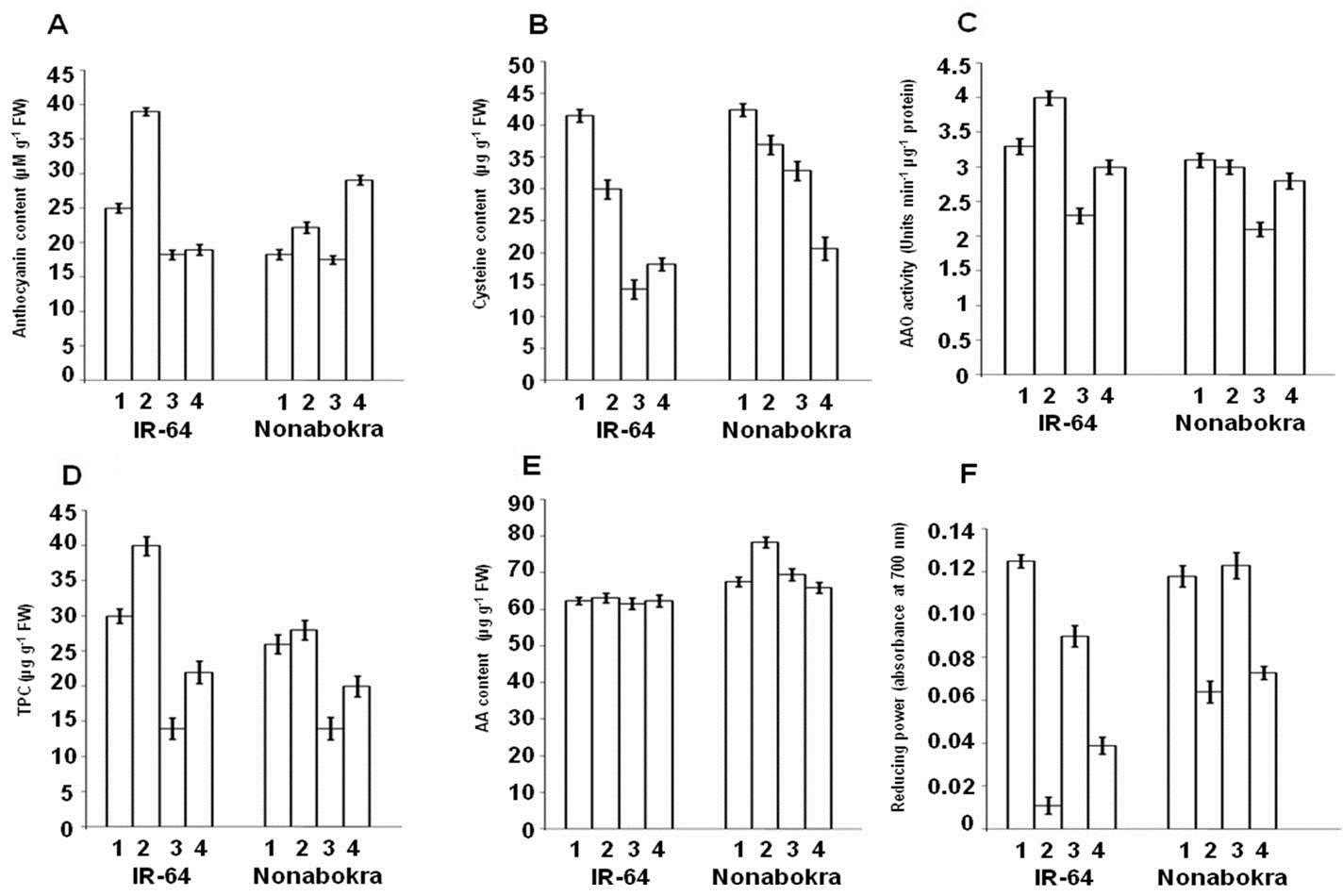Tropical Plant Research
An International Journal by Society for Tropical Plant Research
2016, VOLUME 3 ISSUE 3Pages: 616-633
Seed priming with spermine ameliorates salinity stress in the germinated seedlings of two rice cultivars differing in their level of salt tolerance
Saikat Paul and Aryadeep Roychoudhury*
Abstract:
The present study was aimed to assess the efficacy of the tetramine, spermine (Spm) as a seed priming agent in attenuating oxidative damages and improving salt tolerance in salt-stressed seedlings of IR-64 (salt-sensitive) and Nonabokra (salt-tolerant) rice cultivars. The extent of damages was lesser in Nonabokra due to higher cysteine and ascorbic acid (AA), reducing power ability, concomitant with unaltered ascorbic acid oxidase (AAO) activity, and elevated ascorbate peroxidase (APX) and α-amylase activity. Spm priming alleviated salt stress injury by lowering the malondialdehyde and H2O2 content and avoiding chlorophyll degeneration in both the cultivars, the effect being more pronounced in IR-64 in terms of H2O2 reduction. The intrinsic property of Spm in stress amelioration was highly evident with respect to the reduction in the levels of anthocyanin, total phenolics and cysteine, and activity of AAO and superoxide dismutase (SOD) in IR-64, whereas lowered guaiacol peroxidase (GPX), catalase (CAT) and SOD activity in Nonabokra, as compared to Spm non-primed stressed-seedlings. However, Spm priming enhanced the reducing power ability, GPX, α-amylase and polyphenol oxidase (PPO) activities in IR-64, and anthocyanin, AA and CAT activity in Nonabokra, as means of mitigating cellular NaCl toxicity. A clear-cut variation in GPX, CAT, SOD and esterase isozyme profile was discernible between the two cultivars during salinity stress, with specific isoform(s) being up regulated or down regulated with Spm pre-treatment. In terms of osmolyte regulation, Spm priming appeared to be more promising in Nonabokra, because of the enhanced levels of reducing sugar, amino acids and proline. All these results indicated that seed priming with Spm at the pre-sowing stage can promote salinity tolerance with varying degrees in the two rice cultivars by attenuating oxidative damages, triggering the antioxidants and osmolytes, and activating the antioxidative enzymes at the protein level.
The present study was aimed to assess the efficacy of the tetramine, spermine (Spm) as a seed priming agent in attenuating oxidative damages and improving salt tolerance in salt-stressed seedlings of IR-64 (salt-sensitive) and Nonabokra (salt-tolerant) rice cultivars. The extent of damages was lesser in Nonabokra due to higher cysteine and ascorbic acid (AA), reducing power ability, concomitant with unaltered ascorbic acid oxidase (AAO) activity, and elevated ascorbate peroxidase (APX) and α-amylase activity. Spm priming alleviated salt stress injury by lowering the malondialdehyde and H2O2 content and avoiding chlorophyll degeneration in both the cultivars, the effect being more pronounced in IR-64 in terms of H2O2 reduction. The intrinsic property of Spm in stress amelioration was highly evident with respect to the reduction in the levels of anthocyanin, total phenolics and cysteine, and activity of AAO and superoxide dismutase (SOD) in IR-64, whereas lowered guaiacol peroxidase (GPX), catalase (CAT) and SOD activity in Nonabokra, as compared to Spm non-primed stressed-seedlings. However, Spm priming enhanced the reducing power ability, GPX, α-amylase and polyphenol oxidase (PPO) activities in IR-64, and anthocyanin, AA and CAT activity in Nonabokra, as means of mitigating cellular NaCl toxicity. A clear-cut variation in GPX, CAT, SOD and esterase isozyme profile was discernible between the two cultivars during salinity stress, with specific isoform(s) being up regulated or down regulated with Spm pre-treatment. In terms of osmolyte regulation, Spm priming appeared to be more promising in Nonabokra, because of the enhanced levels of reducing sugar, amino acids and proline. All these results indicated that seed priming with Spm at the pre-sowing stage can promote salinity tolerance with varying degrees in the two rice cultivars by attenuating oxidative damages, triggering the antioxidants and osmolytes, and activating the antioxidative enzymes at the protein level.

Fig.: Effect of Spm (2.5 mM) pre-treatment of seeds (8 h) on antioxidant parameters, viz., anthocyanin content.
| 0 | 1 | 3 | 1 | 0 | 3 | 0 | 6 |


